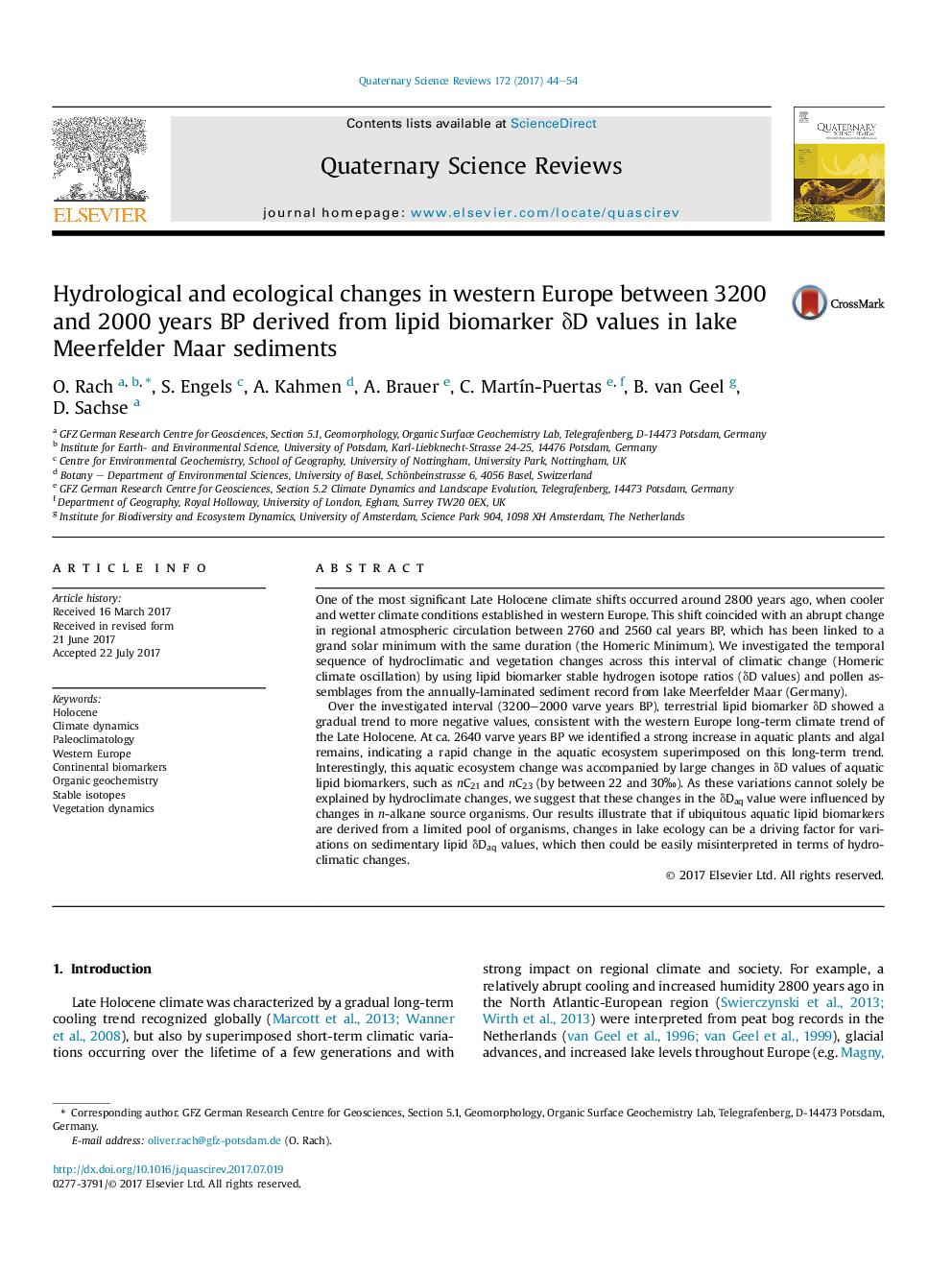| Article ID | Journal | Published Year | Pages | File Type |
|---|---|---|---|---|
| 5786549 | Quaternary Science Reviews | 2017 | 11 Pages |
Abstract
Over the investigated interval (3200-2000 varve years BP), terrestrial lipid biomarker δD showed a gradual trend to more negative values, consistent with the western Europe long-term climate trend of the Late Holocene. At ca. 2640 varve years BP we identified a strong increase in aquatic plants and algal remains, indicating a rapid change in the aquatic ecosystem superimposed on this long-term trend. Interestingly, this aquatic ecosystem change was accompanied by large changes in δD values of aquatic lipid biomarkers, such as nC21 and nC23 (by between 22 and 30â°). As these variations cannot solely be explained by hydroclimate changes, we suggest that these changes in the δDaq value were influenced by changes in n-alkane source organisms. Our results illustrate that if ubiquitous aquatic lipid biomarkers are derived from a limited pool of organisms, changes in lake ecology can be a driving factor for variations on sedimentary lipid δDaq values, which then could be easily misinterpreted in terms of hydroclimatic changes.
Keywords
Related Topics
Physical Sciences and Engineering
Earth and Planetary Sciences
Geology
Authors
O. Rach, S. Engels, A. Kahmen, A. Brauer, C. MartÃn-Puertas, B. van Geel, D. Sachse,
